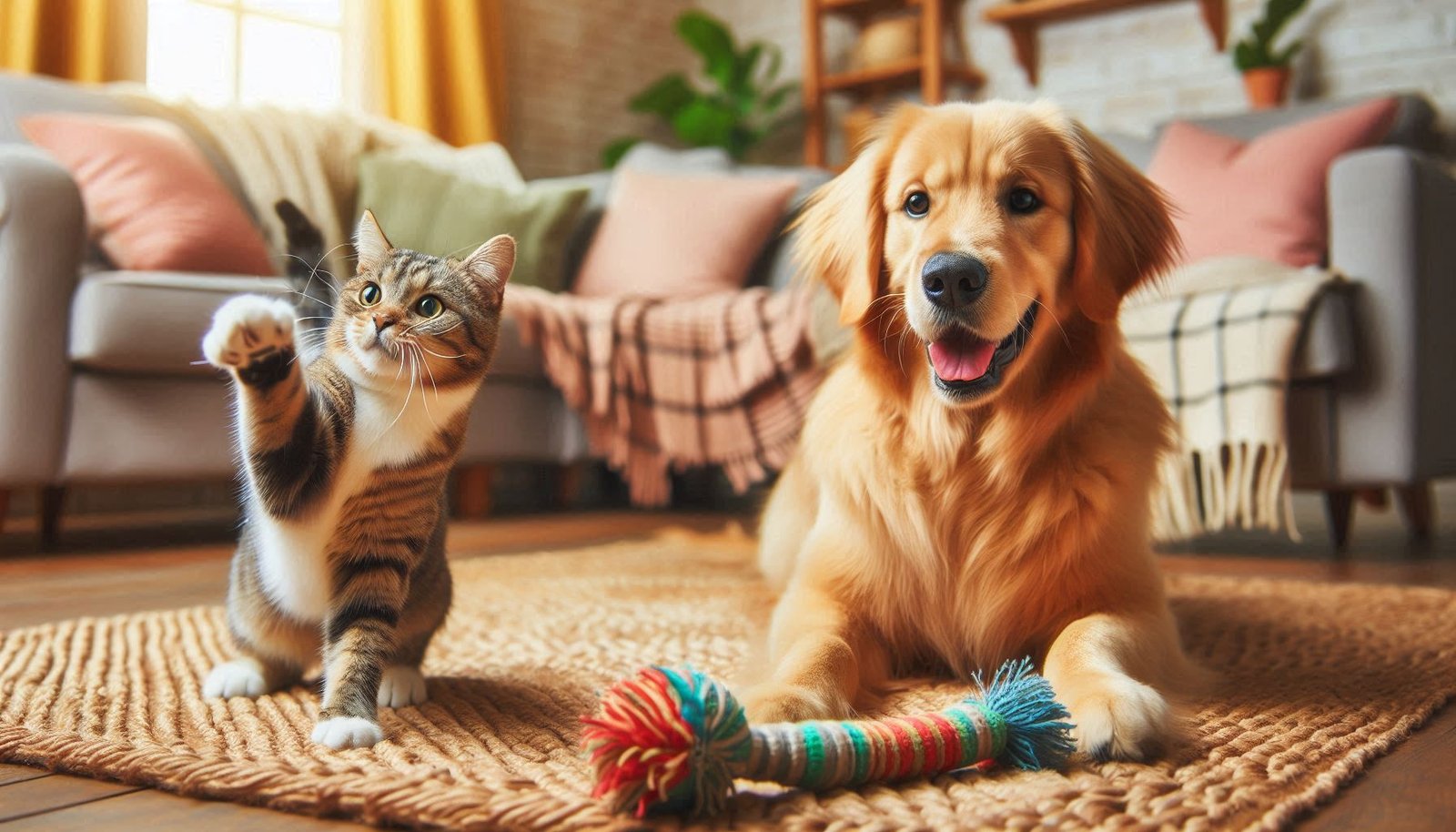Introduction
Potty training is a crucial part of puppy training and is essential for a happy home. The best way to potty train your dog not only keeps your house clean but also builds trust and understanding between you and your pet.
The key to success lies in a method that combines consistency, patience, and positive reinforcement. By following a structured approach, puppies can quickly learn what is expected of them, making the process easier for both of you.
However, training a puppy comes with challenges:
- Accidents: These are unavoidable but can be managed.
- Behavioral quirks: Every puppy has a unique personality which can affect the training process.
- Consistency: Sticking to a regular schedule can be tough but is essential for success.
By approaching these challenges with a strategic mindset, you can turn potential roadblocks into opportunities for effective puppy training.
1. Understand Your Puppy’s Behavior During Training
Understanding puppy behavior during training is crucial for a successful potty training journey. Observing and interpreting your dog’s actions can make all the difference.
Key Behaviors to Observe
- Restlessness and Circling: Puppies often circle or become restless when they need to do their business. Catching this early helps you guide them to the appropriate spot.
- Sniffing the Ground: A telltale sign that they are searching for a place to go.
- Whining or Barking at the Door: When puppies realize they need to go, they might head to the door and make noises to grab your attention.
Behavior Influences Potty Training Success
Behavior heavily influences how effectively a puppy learns where and when to go potty. Consistently responding to their signals reinforces positive habits. Ignoring these cues, however, can lead to confusion and accidents indoors.
The Role of Natural Instincts in Potty Training
Puppies possess instincts that guide their potty behaviors:
- Denning Instincts: Puppies prefer not to soil their sleeping area. Utilizing this instinct through crate training can expedite housebreaking.
- Scent Marking: They may return to previously used spots due to lingering odors. Cleaning accidents thoroughly with enzymatic cleaners ensures this doesn’t become a habit.
Understanding these behaviors and instincts is foundational for efficient training, aligning your techniques with natural tendencies for optimal results.
2. Establish a Consistent Potty Training Schedule
A consistent puppy training schedule is crucial for effective potty training. Puppies thrive on routine, and having a structured plan helps them understand when and where they should relieve themselves.
Guidelines for Scheduling Bathroom Breaks
- Age-Based Frequency: A general rule of thumb is that puppies can hold their bladder for about one hour per month of age plus one additional hour. For instance, a 3-month-old puppy can typically wait four hours between bathroom breaks.
- Breed Considerations: Smaller breeds often need more frequent breaks than larger breeds due to their smaller bladders.
Impact of Feeding Times on Potty Needs
Feeding schedules directly influence bathroom needs. Consistent meal times lead to predictable elimination patterns.
- Feeding Twice Daily: Most puppies benefit from being fed twice daily, which aligns with their natural digestion cycles.
- Post-Meal Breaks: Taking your puppy out shortly after eating (within 15-30 minutes) helps establish the connection between meals and potty time.
By adhering to these guidelines and maintaining regularity in both feeding and bathroom breaks, you set the foundation for a successful potty training journey.
3. Use Effective Potty Training Techniques
Effective potty training methods hinge on several proven techniques tailored to puppies’ unique learning processes. Among these, positive reinforcement and a robust reward system stand out.
1. Positive Reinforcement
Reward your puppy immediately after they eliminate outdoors. This can be in the form of treats, praise, or playtime. The immediate association between the act and the reward strengthens the desired behavior.
2. Using Verbal Cues
Introduce specific words or phrases consistently during potty time. Phrases like “go potty” or “do your business” help your puppy understand what is expected of them. Consistency in using these cues is vital for effective communication.
3. Crate Training as a Tool for Housebreaking
Crates provide a controlled environment where puppies are less likely to soil their sleeping area. Ensure the crate is comfortable yet snug, discouraging accidents inside it. Gradual acclimation to the crate, paired with regular breaks outside, makes this tool highly effective.
Implementing these techniques requires patience and consistency, but they lay a solid foundation for successful potty training. Through strategic use of rewards and clear communication, you guide your puppy towards desirable behaviors seamlessly.
4. Manage Indoor Supervision and Accidents Gracefully
Supervision indoors during potty training is crucial. Constant vigilance helps prevent accidents and reinforces successful habits. Watch for signs like:
- Barking
- Scratching at the door
- Restlessness
- Sniffing around
- Circling
These behaviors indicate your puppy needs a bathroom break. Promptly taking them outside upon noticing these signs can significantly reduce indoor accidents.
Accepting that accidents are part of the process is crucial. Puppies are learning, and setbacks will happen. Handling these mishaps with patience ensures ongoing progress:
- Stay Calm: Punishing your puppy can create fear and confusion, hindering training efforts.
- Immediate Clean-Up: Use enzymatic cleaners to thoroughly remove odors, preventing future incidents in the same spot.
- Reflect on Routine: An accident may signal the need to adjust feeding schedules or increase outdoor breaks.
Adopting a mindset that views accidents as learning opportunities will foster a positive training environment.
5. Socialize, Expose, and Consistency in Potty Training
Socializing puppies during the potty training process plays a crucial role in their overall development. Early socialization helps them become well-adjusted dogs, comfortable with various stimuli and environments. Introducing your puppy to different people, animals, and settings lays the foundation for a confident, well-behaved pet.
Gradual Exposure to Different Environments
- Varied Locations: By exposing your puppy to diverse environments such as parks, urban areas, and quiet neighborhoods, you help them learn that the rules of potty training apply everywhere.
- Weather Conditions: Puppies should experience different weather conditions. Rain or shine, maintaining consistency in their potty routine teaches adaptability.
- Example: Taking your puppy out on a rainy day might seem daunting, but it ensures they understand that outdoor potty breaks are non-negotiable.
Consistency is Key
Maintaining consistency across all environments reinforces the potty training message. Using the same verbal cues and rewards regardless of location solidifies understanding.
“Consistency across different settings accelerates learning and fosters reliable behavior.”
Benefits of Socialization During Potty Training
- Reduces Anxiety: Well-socialized puppies are less likely to develop anxiety-related behaviors.
- Improves Focus: Exposure to various distractions helps strengthen their focus on you and the task at hand.
- Safety Awareness: Socialized puppies are more aware of their surroundings, reducing the risk of accidents in unfamiliar places.
Combining socialization with consistent potty training techniques paves the way for success. This holistic approach not only aids in potty training but also ensures a happy, well-rounded canine companion.
Conclusion: Remember Patience is Key!
Potty training success hinges on patience and consistent effort. It’s natural for puppies to take time to learn where and when to relieve themselves. Staying calm and persistent creates a nurturing environment that encourages positive behaviors.
This journey requires understanding and adaptability, but the rewards are immense. Celebrate small victories along the way, reinforcing your puppy’s progress with love and encouragement. Embrace this bonding experience, knowing each step brings you closer to a well-trained companion.
Your practice’s journey is special. Let us help you turn it into an engaging, community-driven online presence. Contact AVI Lead Generation today and take the first step toward building an impactful platform.








